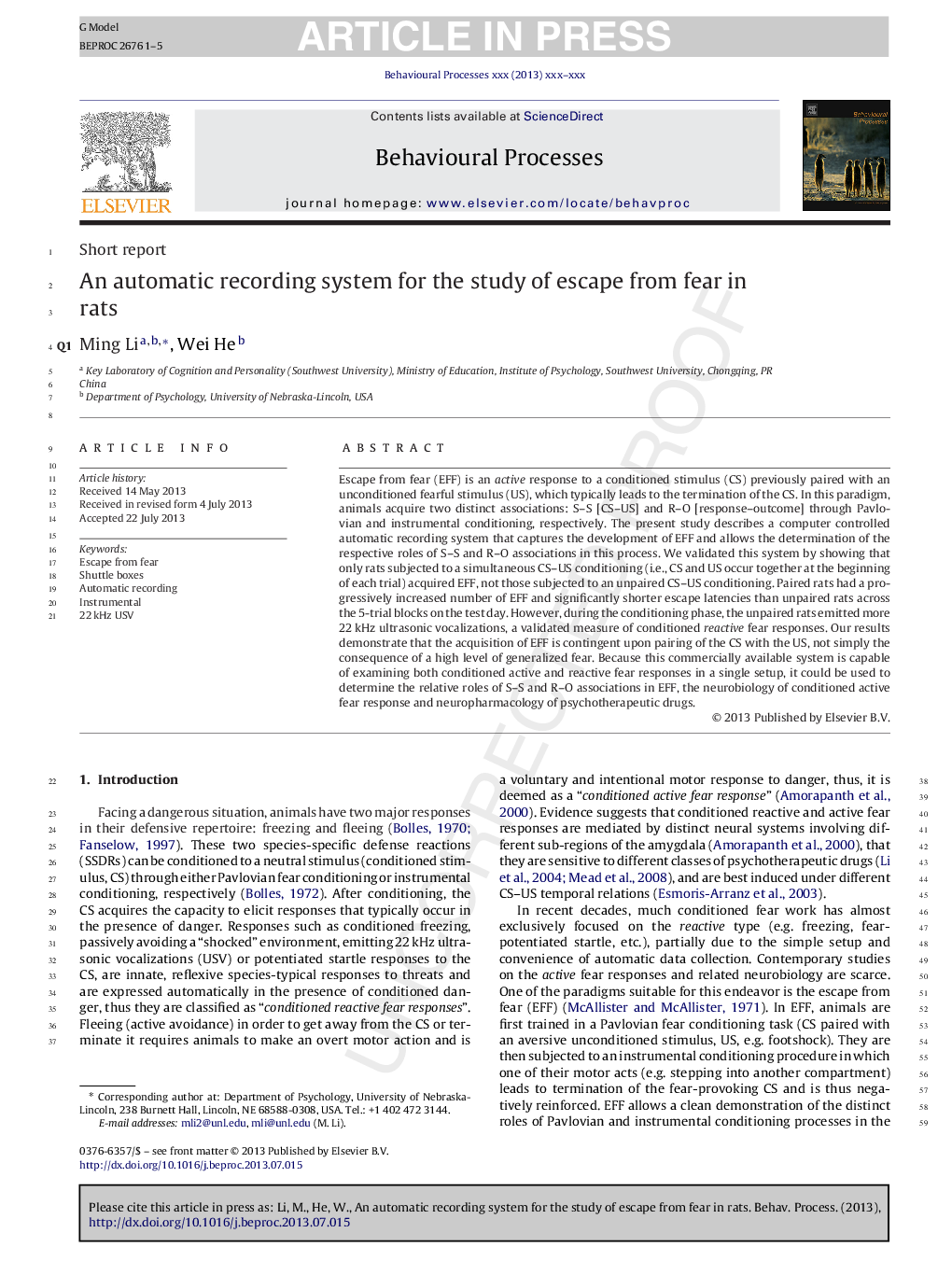| Article ID | Journal | Published Year | Pages | File Type |
|---|---|---|---|---|
| 8497399 | Behavioural Processes | 2013 | 5 Pages |
Abstract
Escape from fear (EFF) is an active response to a conditioned stimulus (CS) previously paired with an unconditioned fearful stimulus (US), which typically leads to the termination of the CS. In this paradigm, animals acquire two distinct associations: S-S [CS-US] and R-O [response-outcome] through Pavlovian and instrumental conditioning, respectively. The present study describes a computer controlled automatic recording system that captures the development of EFF and allows the determination of the respective roles of S-S and R-O associations in this process. We validated this system by showing that only rats subjected to a simultaneous CS-US conditioning (i.e., CS and US occur together at the beginning of each trial) acquired EFF, not those subjected to an unpaired CS-US conditioning. Paired rats had a progressively increased number of EFF and significantly shorter escape latencies than unpaired rats across the 5-trial blocks on the test day. However, during the conditioning phase, the unpaired rats emitted more 22Â kHz ultrasonic vocalizations, a validated measure of conditioned reactive fear responses. Our results demonstrate that the acquisition of EFF is contingent upon pairing of the CS with the US, not simply the consequence of a high level of generalized fear. Because this commercially available system is capable of examining both conditioned active and reactive fear responses in a single setup, it could be used to determine the relative roles of S-S and R-O associations in EFF, the neurobiology of conditioned active fear response and neuropharmacology of psychotherapeutic drugs.
Keywords
Related Topics
Life Sciences
Agricultural and Biological Sciences
Animal Science and Zoology
Authors
Ming Li, Wei He,
